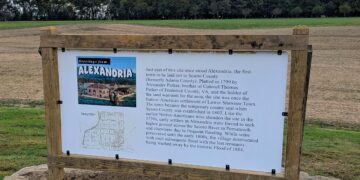Maintaining healthy grazing land is essential for ranchers and farmers looking to support livestock, ensure sustainable agricultural practices, and maximize profitability. Healthy pastures promote productivity and minimize expenses related to feed and land restoration. Keep your grazing land healthy with these tips and suggestions.
Rotate Your Pastures Regularly
One of the most effective ways to maintain healthy grazing land is by rotating your pastures. Overgrazing in one area leads to soil degradation, decreased forage quality, and erosion.
By allowing sections of land to rest and recover while moving your livestock to new areas, you encourage vegetation regrowth and keep plants healthy year-round. This approach also maintains an even distribution of nutrients, as animal manure restores soil richness in different pastures without overwhelming a single section.
Control and Manage Weeds Effectively
Weeds compete aggressively with desirable forage for nutrients, water, and sunlight, reducing the quality of your grazing land. It’s important to regularly inspect your fields for invasive species and act promptly. The method of weed management will vary depending on the type of weeds present but typically includes mowing, pulling, or applying herbicides.
Consider integrated pest management (IPM) practices, which focus on using a combination of biological, cultural, and chemical methods to tackle infestations efficiently. For example, introducing grazing goats for invasive weed management can work wonders while remaining cost-effective and eco-friendly.
Prioritize Soil Health
Healthy soil is the foundation of productive grazing land. Without nutrient-rich soil, it becomes difficult to grow high-quality forage for your livestock. Conduct regular soil tests to monitor pH levels and nutrient content. Based on the findings, apply fertilizers or soil amendments strategically to address deficiencies and prevent overuse, which can harm the environment.
It’s equally beneficial to protect the soil from erosion by ensuring proper plant cover throughout the year. Using cover crops, particularly in the off-season, will prevent soil compaction and increase organic matter content, ultimately improving the land’s overall resilience and viability.
Think About Expenses When Planning Improvements
Keeping grazing land healthy requires careful financial planning. Upgrading infrastructure or implementing new practices, such as rotational grazing or water systems, might come with upfront costs.
For ranchers considering such investments, it’s important to evaluate what to consider when financing a cattle ranch. Look into loans or grants designed specifically for farmland development and make sure you strike a balance between operational improvements and budget constraints.
Keeping your grazing land healthy is an essential element of long-term agricultural success. By rotating pastures, managing weeds, caring for the soil, and ensuring smart water management, farmers will significantly improve their land’s ability to produce quality forage. Evaluate costs and explore financing options wisely for necessary upgrades or new systems.


















































































